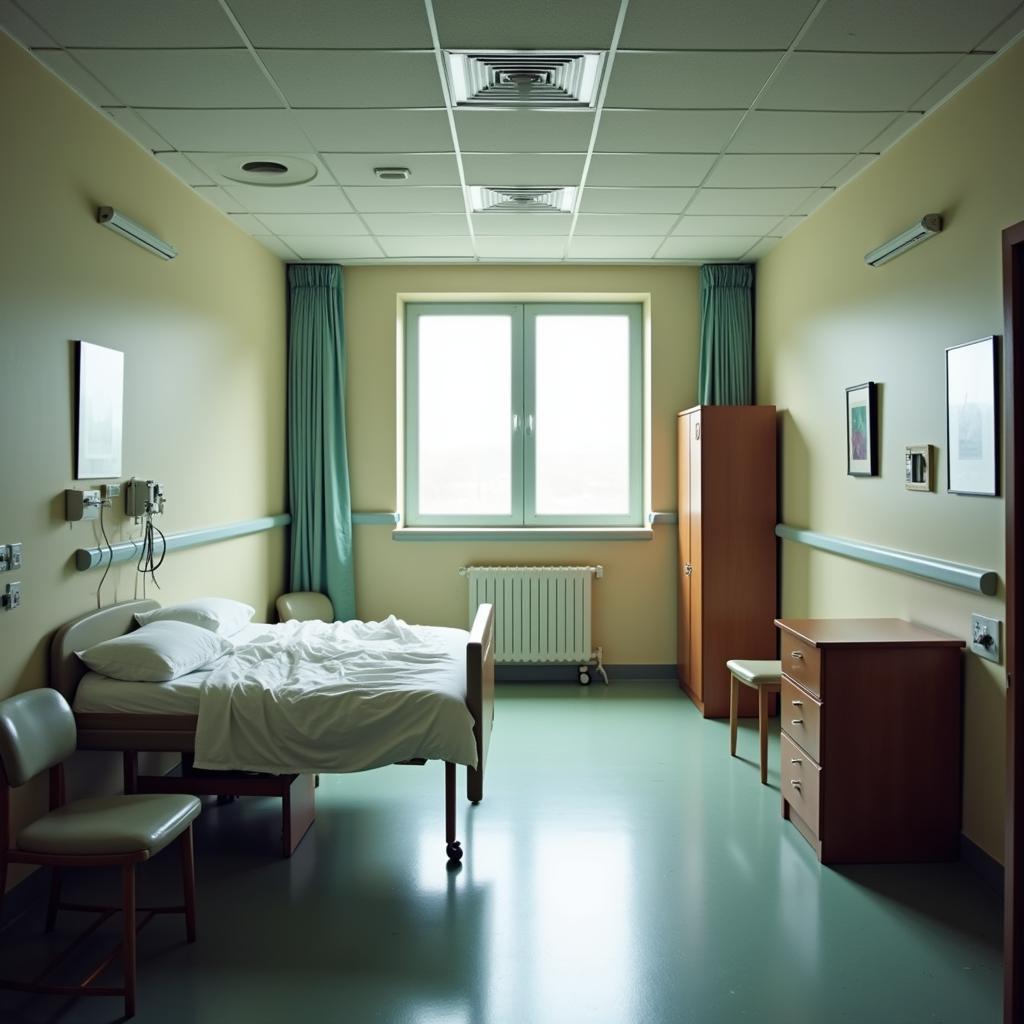A psychiatric hospital bed, also known as a mental health hospital bed, is a specially designed bed found within the confines of a psychiatric hospital or unit. These beds are created with safety and security as paramount concerns, catering to individuals admitted for a range of mental health conditions requiring intensive care and treatment.  Psychiatric Hospital Bed Design Features
Psychiatric Hospital Bed Design Features
What Makes a Psychiatric Hospital Bed Different?
Unlike standard hospital beds, psychiatric hospital beds incorporate distinct features to ensure the safety and well-being of patients who may be at risk of self-harm or experiencing acute behavioral challenges. Let’s delve into some key differences:
- Sturdy Construction: These beds are built to withstand more stress and potential impact compared to regular hospital beds, often crafted from robust materials like reinforced steel or heavy-duty wood.
- Safety Mechanisms: Psychiatric hospital beds often have tamper-proof screws and fasteners to prevent patients from disassembling them. Rounded edges are also common to minimize the risk of injury.
- Restraint Options: While used judiciously and only when medically necessary, some beds may include designated points for attaching restraints to ensure patient and staff safety during acute episodes.
When is a Psychiatric Hospital Bed Necessary?
A psychiatric hospital bed becomes necessary when individuals experience severe mental health challenges that cannot be effectively managed on an outpatient basis. These situations often involve:
- Suicidal Ideation or Attempts: When an individual poses a significant risk of harming themselves, a psychiatric hospital setting with appropriate bed arrangements becomes crucial for their safety and stabilization.
- Acute Psychosis: Individuals experiencing a break from reality, characterized by hallucinations, delusions, or severely disorganized thinking, might require the structure and support provided in a psychiatric unit.
- Severe Behavioral Disturbances: Behaviors that pose a threat to the individual or others, such as intense aggression or extreme agitation, necessitate a secure and supervised environment, often involving a stay in a specialized unit.
 Psychiatric Hospital Room Layout
Psychiatric Hospital Room Layout
What to Expect in a Psychiatric Hospital Setting
Being admitted to a psychiatric hospital can feel daunting, but understanding the environment and typical routines can alleviate some anxiety.
- Structured Daily Schedule: Psychiatric units follow a structured schedule that includes therapy sessions, medication management, meals, and recreational activities.
- Multidisciplinary Care Team: Patients receive care from a team of professionals, including psychiatrists, nurses, social workers, and therapists, all working together to address their needs.
- Limited Personal Belongings: For safety reasons, there are restrictions on personal items allowed in a psychiatric unit.
- Visitation Protocols: Hospitals have specific visitation hours and guidelines to ensure a therapeutic environment.
“It’s important to remember that a psychiatric hospital stay is designed to provide a safe and supportive space for individuals to focus on their mental health recovery,” says Dr. Sarah Thompson, a board-certified psychiatrist with over 20 years of experience.
Seeking Help: A Sign of Strength
Seeking help for mental health concerns is a courageous step towards healing and well-being. If you or someone you know is struggling, reaching out to a mental health professional is crucial. Remember, you are not alone.
Disclaimer: The information provided in this article is intended for general knowledge and informational purposes only, and does not constitute medical advice. It is essential to consult with qualified healthcare professionals for any health concerns or before making any decisions related to your health or treatment.